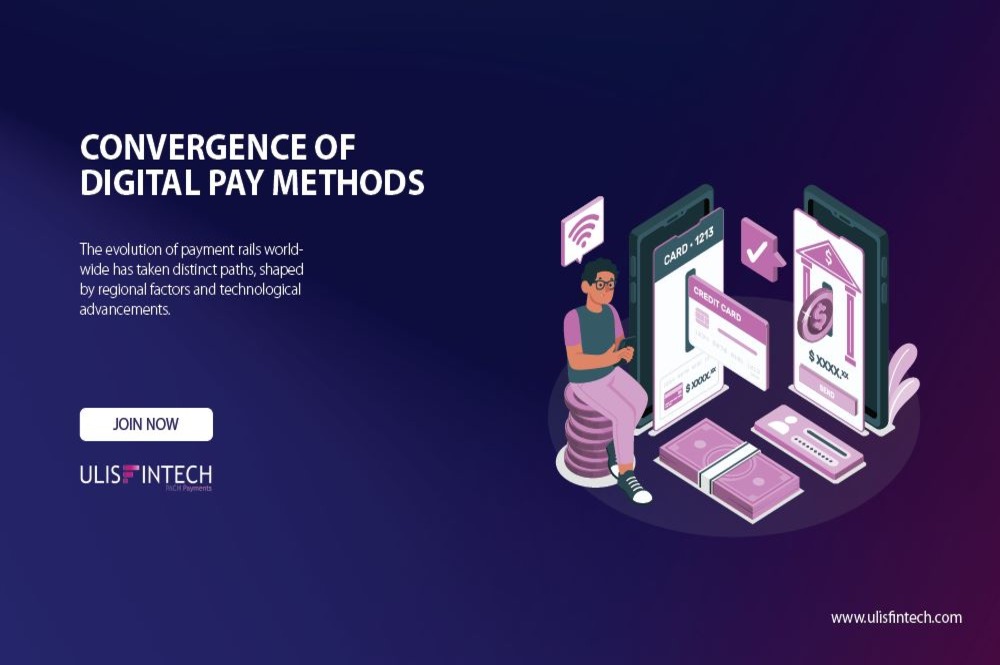Amazon's approach to developing its own Fintech products
Jul 09, 2022 - 8 MINS READ

Amazon's approach to developing its own Fintech products
Amazon is tackling banking services from every angle, from payments and loans to insurance and cash deposits, without even trying to be a traditional bank. We lay down how these measures affect retailers and customers in this paper. We also look at Amazon's different projects, which include everything from cashier-less payment terminals to seller health insurance.
While the expectation for Amazon's foray into banking grows with each passing year, it's critical to first understand Amazon's current financial services strategy - what the firm has launched and created, where it is investing, and what recent products reveal about Amazon's future objectives. Based on our findings it's difficult to say that Amazon is creating the next-generation bank. However, the corporation is still highly focused on developing financial services solutions that serve its major strategic goal: growing Amazon ecosystem involvement.
As an outcome, the firm has developed and marketed products that are designed to:
- Increase the quantity of Amazon merchants and allow each one to sell more.
- Increase the number of Amazon consumers and allow each one to spend more.
- Remove any friction in the buying/selling process.
In the meanwhile, Amazon has made several fintech investments, most of which are focused on overseas markets (such as India and Mexico), where partners may assist Amazon to achieve its key strategic aim.
In the end, these product development and funding decisions demonstrate that Amazon isn't attempting to create a universal bank. Rather, Amazon has adjusted the essential elements of a contemporary banking experience to suit Amazon customers.
Amazon's product plan includes a foray into financial services
Amazon is known for hedging its risks before launching a new product, and the financial services industry is no different. The firm has established important financial pillars in transactions, deposit accounts, and loans through trial and error. All are connected to Amazon's larger business and product objectives, as we'll see below.
Amazon Payments -
- Amazon pay: a payments system and a mobile wallet
Over the last few years, Amazon has made significant investments in payment infrastructure and services. Given how closely the payments experience is linked to Amazon's main e-commerce operation, this is predictable. A key objective for Amazon is to make payments more cash-efficient and seamless for customers.
Amazon Pay has grown to encompass a digital wallet for customers as well as a payments network for both online and offline businesses. Amazon has been investing in the Amazon Pay marketplace since 2019, including forging a collaboration with purchasing bank Worldpay. While Amazon Pay is the business's most recent payment version, the company has been experimenting with payment features for more than a decade.
Amazon has strengthened its payments experience over the last few years by launching digital wallets through Amazon Pay, acquiring tech talent from failed contactless banking start-up Go Pago, building a variety of tech in-house, and, most recently, opening to partnering with merchant acquirers outside of Amazon's marketplace. Amazon Pay is the most recent incarnation, which offers a digital wallet for consumers as well as a payment network for both online and offline retailers and shoppers.
- Media attention and performance measures at Amazon
Beyond its swipe fee trial, Amazon is looking for new methods to entice shops to join the Amazon Pay network. The business said that it will pass on to shops that utilize Amazon Pay the unique card discounts Amazon receives from card networks (because of the number of sales they can guarantee). A traditional customer acquisition technique in Amazon's repertoire is using the size and competing on fees.
And, despite Amazon's reputation for secrecy when it comes to publicizing customer growth and business numbers, a study from 2021 indicated that Amazon Pay had evolved into a significant online payment service in the United States, with a 24 percent user share. Following the service's expansion to other locations — France, Italy, and Spain — and new verticals, such as government payments, travel, insurance, entertainment, and charity donations, Amazon Pay payments increased.
Amazon Pay, on the other hand, has experienced some issues. Amazon Local Register was the company's most well-known failure. Amazon developed Amazon Local Register, a card reader for small and medium-sized companies (SMBs), in August 2014 with talent obtained from Go Pago. The firm was offering competitive pricing at the time (a full percentage point less than Square). Each reader was $10, and it appeared to be a serious competitor to PayPal and Square's readers.
However, the brand declared its closure in October 2015. Despite cheaper costs, the start-up was unable to gain momentum with merchants who were hesitant to provide Amazon with extensive information about their overall business processes.
- Payment services on Amazon
Amazon Payment Services (APS), a payment system provider for the Middle East and North Africa (MENA) area, was launched in December 2020. Payfort, a financial firm bought by Amazon in 2017, has been renamed APS. To develop this payment option, Amazon partnered with several top MENA institutions.
Online clients can pay using worldwide payment systems like Visa and Mastercard, as well as local card schemes if a company uses APS. Users can also pay in monthly installments using local and foreign bank cards.
There are several other advantages to joining APS. Allowing regular customers to skip some identification processes can help businesses decrease checkout friction. APS also offers security solutions to help clients avoid chargebacks and fraud. Companies benefit from a larger percentage of accepted payments as a result. Teams may also utilize APS to create dashboards, combine data from many sources, and track business objectives.
Amazon Cash –
- Pay code: utilizing western union's network to bring Amazon offline
A more recent component of Amazon's financial strategy is integrating portions of the world into the Amazon ecosystem that lack the infrastructure to accept digital payments. With Pay Code, Amazon is allowing customers who have never been able to purchase anything on the site to do so and pay in cash via QR codes. Colombia, Chile, Hong Kong, Kenya, Indonesia, Malaysia, the Philippines, Peru, Taiwan, and Thailand were among the nations where Amazon tested Pay Code. The program was later expanded to Barbados, Costa Rica, Jamaica, Kazakhstan, and Uruguay before being made available to the United States in September 2019. The Federated States of Micronesia, the Marshall Islands, Mauritius, Palau, the Philippines, and Tanzania have all adopted the Pay Code.
- A kid-friendly solution with Amazon and greenlight
Amazon has attempted to exploit the Amazon Cash feature to reach the next generation of customers, in addition to targeting the unbanked and underbanked.
Amazon Allowance, which was eventually integrated under the Amazon Cash umbrella, was added in mid-2015. Kids were able to arrange their own Amazon accounts and make purchases using Amazon Allowance with parental authorization using Amazon Allowance. Parents may set up recurring payments in their child's accounts and have more influence over what their children bought. This function, however, was deactivated by the corporation in July 2020.
- Traction and metrics of Amazon cash
Amazon hasn't said how many consumers use Amazon Cash, but it's evident that there's a big demand for it. According to the 2021 Economic Well-Being of US Households study, 5% of the adult population — of around 12 million Americans — is unbanked.
The worldwide opportunity is also significant; for example, 190 million Indian individuals are unbanked, and just 37% of adults in Mexico have a bank account. Amazon Cash might help Amazon achieve its aim of growing the number of consumers who transact on the Amazon platform by enabling client acquisition in regions with large unbanked populations and established local rivals.
Amazon Lending –
- Consumer lending on Amazon
Amazon Prime cards are available to assist the company to achieve two major objectives: increasing Prime customer numbers and increasing marketplace sales. To entice cardholders, Amazon has begun to provide privileges that are only available to Prime members. Cardholders are more likely than non-cardholders to spend more on Amazon, which promotes Amazon's marketplace
Amazon has experimented with several partner cards for Prime and non-Prime consumers, including:
- Amazon Prime Store Card — Amazon's first card, launched in 2015 with partner Synchrony Bank and offering unlimited 5% cashback on Amazon purchases, was Amazon's first card exclusively for Prime customers.
- Amazon Store Card – For non-Prime members, this card offers some of the same perks as the Prime Store Card. It does not provide the 5% cashback bonus.
- Amazon Prime Rewards Visa Signature Card – This card, which was launched in 2017 in partnership with Visa, provides Prime members 5% cashback at Amazon and Whole Foods, 2% cashback at petrol stations, restaurants, and drugstores, and 1% cashback on everything else.
- Amazon Rewards Visa Signature Card — A Visa partner card that gives 3% cashback on Amazon and Whole Foods purchases, 2% cash back at petrol stations, restaurants, and drugstores, and 1% cashback on everything else for non-Prime customers.
- Amazon Reload is a reloadable digital debit card that pays 2% cash back on Amazon purchases to Prime members exclusively. Consumers' bank accounts are immediately linked to the card, which may be recharged on a regular or one-time basis.
- Amazon Pay ICICI Bank Credit Card — In 2018, Amazon Pay and ICICI Bank, located in India, announced the launch of a Visa-powered co-branded credit card. On purchases made through Amazon India, this card's Prime subscribers may receive 5% cash back, while non-Prime customers can get 3% cashback.







